Matador Network's Blog, page 936
January 23, 2020
Visa restrictions for pregnant women

In addition to expanding the current travel ban, Trump recently announced new visa restrictions for pregnant women, in order to discourage “birth tourism.”
“Birth tourism” is the practice in which women travel to the US solely to give birth, so their children can have a much-desired US passport. If consular officers believe a visa applicant is coming to the US to give birth, they will now have to prove that they are visiting the country for medical treatment, and can afford that treatment.
The new measure is somewhat controversial, as consular officers aren’t allowed to ask about a woman’s pregnancy or plan to become pregnant during visa interviews. Therefore, it’s unclear how officers would determine whether or not a woman is coming to the US to give birth. It is also unclear how border agents will determine if a woman is pregnant or not when going through customs.
It’s undisputable, though, that birth tourism has become a major US industry, with some companies promoting hotel rooms and medical care specifically for expectant foreign mothers — many of whom come from Russia and China, according to AP News.
Birthright citizenship, in which a person who is born in the US automatically becomes a citizen regardless of their parents’ status, is inscribed in the US Constitution. 

More like this: The 7 most expensive tourist visas to save up for
The post New restrictions are coming for pregnant women traveling to the US appeared first on Matador Network.

Trump to expand travel ban

On Wednesday, Trump announced his intention to add more countries to the controversial 2017 travel ban. Officials have confirmed that seven countries are being proposed for the ban, including Belarus, Eritria, Kyrgyzstan, Myanmar, Nigeria, Sudan, and Tanzania. The list is subject to changes if nations comply with US security measures such as biometric information and electronic passports.
“We’re adding a couple of countries to it,” Trump told reporters about the expansion. “We have to be safe. You see what’s going on in the world. Our country has to be safe. It’s going to be announced very shortly. OK?”
The current travel ban denies immigrant and non-immigrant visas to applicants from Iran, Libya, Somalia, Syria, Yemen, Venezuela, and North Korea.
The original travel ban prompted protests across the country, and the extension is likely to spark outrage again.
The Trump administration is also unveiling new visa restrictions, with the aim of discouraging “birth tourism,” wherein women travel to the US to give birth so that their children are automatically US citizens and can get a passport. 

More like this: The 9 most difficult travel visas for Americans to obtain
The post Trump plans to expand travel ban to seven new countries appeared first on Matador Network.

January 22, 2020
How to ski the Big Sky resort

Wild, untamed, and home to some of the gnarliest lines you can ski from a chairlift. Such is the lore of Montana’s Big Sky Resort, which had piqued my interest — as a big-mountain snowboarder and adventurer — for more than a decade.
I came to Montana to find what seems to be rapidly disappearing from many ski areas under corporate conglomeration. I wanted to ride some extreme terrain, yes, but I also wanted to spend time with the people who built their lives around that terrain, the people increasingly forced out of mountain towns to make room for the next multi-million-dollar development project.
Big Sky was supposed to be the place to find both. A place where — despite being accessible to Ikon Pass holders and adjacent to the one-percenter’s private Yellowstone Club, where the likes of Justin Timberlake and Tom Brady spend their ski holidays — the locals were still just as hardcore as they’ve always been.
I came, in essence, to find out what this place was all about.
Triple black diamonds that will scare you

Photo: fellswaymedia/Shutterstock
Big Sky has no shortage of the goods. This includes a series of newly minted “triple black diamond” runs, a rare classification meant to instill caution in the traveling, Ikon Pass-holding ski public. Since the pass’s inception in 2018, that public has swarmed to places like Big Sky with their skis waxed and their egos ready to wax poetic about heroic alpine pursuits.
The locals, I soon learned, were becoming increasingly wary of underprepared globetrotters who seemed to know little more about the mountain than the names of the runs they hoped to brag about. “Big Sky offers the type of terrain that diehard skiers travel tens of miles into the backcountry for,” said Patrick Conroy, a video producer with the resort’s media department. “It’s easy to scare yourself here.”
The most extreme areas, including Big Couloir and North Summit Snowfield off the top of Lone Mountain, are classified as “Special Access Terrain.” They may not be open on any given day, with unpredictable wind and rapidly changing avalanche conditions often closing both for days at a time.
Should you be fortunate to catch Big Couloir, you’ll have to sign a waiver clearing the resort of any responsibility for your own adventurism before beginning the traverse to the drop in. You must ski with a partner, and avalanche gear including a beacon, shovel, and probe are highly recommended to the point that you’ll probably — and justifiably — be jeered at if you don’t have them.
“You have to be careful here,” says Conroy. As someone who’s on the mountain every day, he had joined me for dinner at Westward Social on my first night in town to offer his tips on terrain and, I gathered, to make sure I wasn’t coming in too hot-headed. “If you don’t know what you’re getting into, you get cliffed out and have to get rescued. Even with all the growth and expansion, at the end of the day, the mountain still keeps us humble.”
Terrain that is shaped by the wind
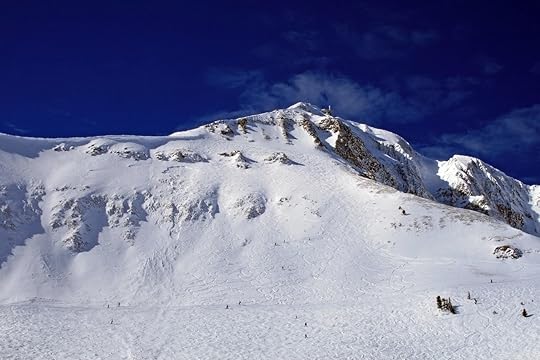
Photo: Colton Stiffler/Shutterstock
“No matter which way the wind blows, it’s leaving something good,” says Conroy. “But the steeps are even more challenging when they’re not full of powder. I find myself more gripped then because it’s like a puzzle. It never skis the same way twice. What move do I make next?”
Lone Mountain, whose monolithic peak towers over the resort and is viewable throughout the surrounding valley, is a full-on microclimate in itself, with westward wind routinely barreling over its windward ridge and settling on the skiable faces. Because of the wind factor, avalanche danger is omnipresent at Big Sky.
“Every day, Big Sky Ski Patrol methodically assesses the snow stability on Lone Mountain,” says Mike Buotte, Snow Safety Director with Big Sky Ski Patrol. “The absolute priority is safety. Opening high-alpine terrain requires extra careful work, both on the mountain and with data analysis. Our safety, and yours, requires diligence and, oftentimes, patience.”
“The most rewarding days are when we have fresh snow, and Lone Mountain is safely open, wall to wall, in a timely manner with skiers enjoying safe access to the exceptional terrain Big Sky has to offer,” Buotte adds.
Riding the last frontier

Photo: Biografix/Shutterstock
I awoke the morning of my first day on the hill to a storm rolling in. Clouds covered Lone Mountain, impeding the view of Big Couloir — my primary target for the trip — from my eighth-floor room at the Summit at Big Sky hotel.
“It’s actually insane that this terrain is avy-controlled, almost too good to be true,” I said to Kass McCarthy, my pro guide from Big Sky’s ski school, before we dropped into Liberty Bowl from the 11,166-foot summit of Lone Mountain. Moments earlier, on the ride up the Lone Peak Tram, I had asked her about the triple black diamond runs. “What they really mean is that I’m going to have to add another diamond to my ass tattoo,” she had said. “The resort added a third diamond in order to separate them from the more ‘normal’ extreme terrain here.”
During my first morning on the mountain, three patrol-triggered avalanches rumbled down from the hazardous steeps of Lone Peak in the matter of a few minutes. One, set off in The Headwaters, had completely blanketed the triple black diamond run Obsidian, potentially knocking it out of commission for the remainder of the season.
The resort’s “Special Access Terrain” was closed due to the risk. Still, I’d be lying if I said I wasn’t nervous at that moment.
Giving the mountain the respect it deserves

Photo: Tim Wenger
The problem is that not everyone adopts the lack of ego Conroy suggests. Big Sky, along with extreme skiing hotspots like Jackson Hole, Wyoming, and Squaw Valley, California, have borne the brunt of bucket-listers with the Ikon Pass. This has brought loads of new skiers and snowboarders to their hills. Some locals point out that many of these visitors don’t adequately research their destinations and, by attempting to access extreme terrain and iconic runs that they aren’t familiar with, are making the mountain less safe for everyone.
They’re also clogging up lift carousels and apres-ski bars. According to the National Ski Areas Association, after years of slow or no growth, skier numbers across US resorts increased to 59 million — or 11 percent — during the 2018-19 season. That was also the first season of the Ikon Pass’s existence. Several resorts, including Big Sky, are also attracting skiers with programs like First Tracks, where customers can pay to ascend the mountain an hour before the general public to access fresh powder.
A misconception among skiers visiting Big Sky, and resorts with comparable terrain, is that they’ve earned the right to be there — even on roped off runs. Their presence, though, can impede the safety progression of the mountain patrol. Sometimes, it’s just not meant to be. When the peak is closed or late to open, it’s because ski patrol is responding to legitimate issues — like an avalanche threat that puts skiers on the mountain at risk — and is working to open the terrain when conditions allow.
Two hours after strapping in for our first run, McCarthy and I still hadn’t received clearance to head to the Lone Mountain summit.
A proper day at Big Sky
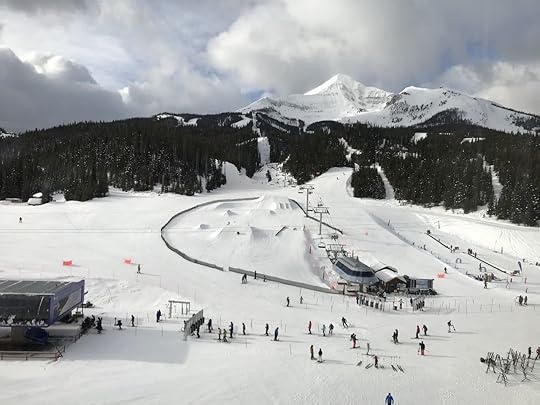
Photo: Tim Wenger
The good news is that, even when the Special Access Terrain is closed, there’s still plenty to ski at Big Sky. With a vertical drop of 4,350 feet across over 5,800 acres of terrain, it’s nearly impossible to hit the entire mountain in one trip.
When the summit runs are closed after a storm, you can head to the runs off Headwaters Zone 0 — accessible via a grueling, singletrack-width traverse through the gate at the top of the Headwaters Lift. We descended on Cold Spring, a precipitous and narrow couloir that, like most of Big Sky’s tougher runs, is a definitive “no fall” zone.
After navigating the couloir and passing through Stillwater Bowl below, we lapped the short-and-sweet Lone Tree lift. There, the rugged, tree-lined bumps of Shaftway and Single Jack are a good start, and the formidable Moonshine takes tight jump turns to manage. We then moved on to Andesite Mountain, via the Ram Charger lift, and dropped into Shady’s Chute, Colter’s Hell, and MineShaft. The best run in this area, though, is Peru, a double-black descent through widely spaced trees steep enough that it feels like any slip-up will drop you onto the row of vacation homes below.

Photo: Tim Wenger
Still, the summit eluded us. We checked in with the lifties after each run. We finally got the call around 11:30 AM and made our way over.
A 270-degree view from Beacon Point to Sphinx Mountain greets skiers as they exit at the top of the tram. Time appeared to stop. Everything, in fact, appeared to stop except for the wind and the pounding of my heart in my chest. I strapped into my board and proceeded onward to Liberty Bowl. We’d entered another no-fall zone.
We made our way down to the Dakota Lift via Bavarian Forest, ending the day with a beer at Shedhorn Grill. This yurt at the bottom of the Lenin run is one of the few independently operated food and beverage establishments at the resort — and the best place to toast to the exhilarating experience that is skiing or riding down from the summit of Lone Mountain.
Ambitious plans for the future

Photo: Zorro Stock Images/Shutterstock
“I wear my beacon every day I ski out here; it’s just that kind of place,” Stacie Mesuda, Big Sky’s PR Manager, had told me back on my first night in town, a piece of advice I followed throughout both of my days on the hill. “I’m blown away constantly at how remote it actually is.”
Its remoteness doesn’t mean that the resort is lacking in amenities, however. Big Sky is home to North America’s sole eight-person lift, the Ram Charger, which warms its passengers with heated seats and a retractable wind bubble, use of which locals referred to as “going underwater.” With the unpredictability of Montana’s high-altitude weather, the comforts can be nice, even for the hardiest of mountaineers.
The resort’s long-term action plan, known as Big Sky 2025, is underway. Ram Charger is part of what the resort hopes to turn into the most technologically advanced lift network in North America, combining the comforts of toasty, high-speed ascents into a Euro-style layout, where skiers can quickly move about different base areas including the primary access point, Mountain Village, the smaller Madison Base, and two members-only villages, Spanish Peaks and Moonlight Lodge.
“Where Colorado and Utah hit their stride 20 years ago, we’re feeling that now,” Mesuda said.
It’s on us to protect these places

Photo: Tim Wenger
On my last night in town, McCarthy invited me for beers — which topped out at Montana law’s three-pint-per-person maximum — with her crew of instructors, ski patrollers, and other locals at Beehive Basin Brewery. McCarthy had shown me terrain ranging from steep couloirs to tree carvers to powder fields that most casual weekenders never get the chance to know, and I enjoyed comparing my limited experience with theirs. Beyond that, I hadn’t felt so welcomed by a group of strangers since college.
I didn’t get my Big Couloir run in, but I did find the best of what the mountain, and the ski-town culture that I’ve spent my life pursuing, had to offer. What stood out most to me was how passionate everyone was about protecting their town’s culture and lifestyle, a sentiment similar to what I’ve experienced — and felt myself — in ski towns back home in Colorado.
For a visiting journalist, though, this spirit also meant that I had never felt such a watchful eye on me. To some locals, I’m part of the problem, part of the reason why they had to wait two hours to board the tram after the last storm. I sensed pressure from a community of diehards who’ve dedicated themselves to this place and who are understandably wary of those who come in and leave just as quickly, ready to write a story that isn’t their own.
Big Sky is among the last great ski towns left in America. It’s on us, as visitors to these special places, to treat them with the respect they deserve. It’s not that we shouldn’t come. We should come — adequately prepared and also ready to back off when necessary. That’s how we can do right by both the mountain and the people who make it accessible to us, and help keep these places as unique as they are.
With the massive changes afoot, the question going forward is whether Big Sky can retain its “final frontier” vibe.
One need only look to Montana’s rebel spirit to find the answer. 

More like this: Why Banff should be the base for your next backcountry adventure
The post Big Sky is the final frontier for big-mountain resort skiing appeared first on Matador Network.

20-year-old WI cheddar for sale

In the wintertime, it’s always a good idea to stock up on emergency food in case of a sudden blizzard. Few foods are more comforting than cheese, and now you can purchase 500 pounds of 20-year-old cheddar. Wisconsin cheesemaker Tony Hook is now ready to sell his 20-year aged cheddar at $209 a pound. Half the proceeds will go toward funding dairy research at the University of Wisconsin, which might just make that high price tag a bit more palatable.
Ken Monteleone, owner of Madison cheese-shop Fromagination, which had carried Hook’s Cheese for a long time, said of Hook’s cheese that it was “very smooth and buttery, with all these layers of flavor and these calcium crystals you’d typically only see with parmigiano reggiano.” According to Monteleone, Hook is one of the best aged-cheddar makers in the country.
Hook and his wife, Julie, bought their own factory in 1987 and decided to experiment with aging their cheddars past three or four years. At the time, this was a rare and unique process. Through this experiment, Hook became an expert in cheddar aging and has wound up with a 500-pound batch of cheddar at the 20-year mark. Now, it’s time to sell.
For more details about the cheese, or to make a purchase, check out the Fromagination website. 

More like this: This Norwegian cheese is officially the best in the world
The post 500 pounds of 20-year-old cheddar is for sale in Wisconsin appeared first on Matador Network.

How to experience Sámi culture
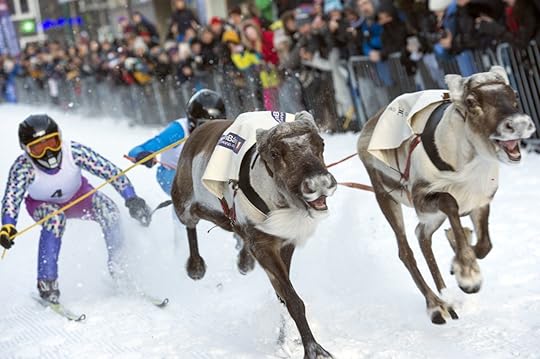
Geographically, Arctic Europe makes up the majority of the land traditionally inhabited by Europe’s only indigenous people: the Sámi. A Finno-Ugric people, the Sámis have historically lived off the land by hunting wild reindeer and fish and later herding reindeer. They have lived in Northern Europe for thousands of years, before it was colonized and referred to as the countries we know today; Norway, Sweden, Finland, and Russia. Although Sápmi — the land of the Sámis — stretches south of the Arctic Circle, traveling above this line of latitude in Norway, Sweden, Finland, and Russia is the best way to get properly introduced to Sámi heritage and culture.
Matador Network spoke with Karoline Trollvik from the coastal Sámi community Gáivuotna/Kåfjord in Troms County. She previously worked as the director of the international indigenous festival Riddu Riđđu for four years and now runs the Várjjat Sámi Museum in Unjárga/Nesseby in Finnmark County, Norway. We also spoke to Lennart Pittja, a Sámi entrepreneur from Nábrreluokta who runs Sapmi Nature Camp in his native Sámi community of Unna Tjerusj, an hour’s drive from Gällivare in Sweden. From our conversations with Trollvik and Pittja, we determined the nine best ways for travelers to experience and learn more about Sámi culture in Arctic Europe.
1. Book a stay with a Sámi-run tourism operation.

Photo: Sapmi Nature/Facebook
Stay at Sámi-run Sápmi Nature Camp in Nábrreloukta, Sweden. Lennart Pittja, who runs Sapmi Nature Camp, grew up in the Sámi community of Unna Tjerusj in a family of reindeer herders but chose a different direction in life. He has worked in the tourism sector for 25 years and takes pride that his professional activity teaches outsiders about his people’s culture and traditions. Spend the night sleeping in a lavvu, a traditional Sámi tent similar in looks to a Native American tepee; visit Pittja brother’s reindeer herd; ski on a lake; and reconnect with the land of Laponia, or “the largest area in the world (and one of the last) with an ancestral way of life based on the seasonal movement of livestock” according to UNESCO.
2. Rent a car and go on a tasting tour of traditional Sámi cuisine.

Photo: Slow Food Sápmi/Facebook
Sápmi — the homeland of the Sámi people — encompasses large parts of Sweden, Norway, Finland, and Russia north of the Arctic Circle. It’s vast, and Trollvik recommends you drive around the region to see the landscape where Sámi people lived and roamed the land long before national borders were a thing. Fly into Kiruna and rent a car at the airport. Drive towards Nikkaluotka and support the Sámi Slow Food movement by trying out reindeer meat and arctic char fish at Skaida restaurant. Continue south towards Jokkmokk, host of the Jokkmokk Winter Market — an important meeting place for Sámi people who have come here to trade and socialize since the early 17th century. In Jokkmokk, Pittja recommends you visit Sámi-run café and shop Arctic Deli where you can buy locally made cheese flavored with kvanne — a versatile herb the Sámis have traditionally added to reindeer milk to make it last longer, as well as have used for medicinal purposes.
3. Attend a Sámi design event in Tromsø, Norway.

Photo: Šoop Šoop – Sámi design days/Facebook
Pay a visit to Šoop Šoop — Sámi Design Days — in Tromsø, Norway. Šoop Šoop is a two-day event meant to showcase Sámi handicraft and design, and it’s taking place for the first time in February 2020. You’ll be able to find glass-design inspired by Sámi culture from Boble Glasshytta, interior design from Makemi, and jewelry from LilleLi Smykker.
4. Visit Ájtte, Swedish Mountain, and the Sámi Museum in Jokkmokk, Sweden.

Photo: Ajtte Museum
The Ájtte Museum is a comprehensive introduction to Sámi history, culture, and traditions in Sweden. Wander through the exhibitions and learn some words in Northern Sámi — including ceavvi (moist snow that packs and freezes), geardni (a layer on the snow reminiscent of ice), and njáheu (clogged snow that sticks very lightly under sleighs and skis) — that reindeer herders use to describe the ecological relationship between the reindeer and the snow. Read about Sámi drums and the history of traditional Sámi shamanism, and get to know nine different kolts (traditional Sámi clothing) from Swedish Sápmi that are displayed at the museum. During summer, the museum also runs guided tours of its adjacent Mountain Botanical Garden.
5. Read up on Sámi history and culture before and during your visit.

Photo: Siida
Trollvik emphasizes the importance of learning about the history of the Sámi people. “We are an indigenous minority that has been assimilated and colonized by different nation-states throughout history. We’re still fighting for the rights to continue our traditional livelihood and to live off the land and resources from a Sámi perspective. It is often in direct conflict with state interests, so a little time to dig into this is not a bad idea,” she says. She also recommends the topic to keep the conversation going, claiming, “You’ll also have a lot more to discuss with the Sámi people you meet on your travels.”
To get an idea of the current situation and issues, Trollvik recommends the website of non-governmental organization Saami Council. To get a brief introduction to Sámi culture and history, Pittja suggests samer.se — the website of the Sámi information center which aims to educate people about Sámi people and culture — as well as the tourism board of Swedish Lapland. Once in Arctic Europe, you can also visit the Sámi History & Culture Museum in Lovozero, Russia, where more than half of Russia’s Sámi population of 1,600 people live today, or Siida, a nature center and Sámi museum in Inari, Finland.
6. Have a blast at a Sámi festival.

Photo: V. Belov/Shutterstock
Celebrate Sámi National Day on February 6. Sámi National Day marks the day when the first Sámi congress, an assembly held to discuss Sámi interests that attracted 150 Sámi participants from Sweden and Norway, was held in Trondheim in Norway in 1917. Both Tromsø in northern Norway and Jokkmokk in northern Sweden host week-long celebrations in conjunction with Sámi National Day. In Tromsø, celebrations include a championship in reindeer racing and concerts and films. In Jokkmokk, in conjunction with its annual winter market, celebrations include a traditional reindeer caravan and joik (traditional Sámi song) performances on the marketplace’s outdoor stage. Other Sámi events throughout the year include music festival Ijahis Idja in Inari in Finland, the Sámi Summer Festival in Lujavri/Lovozero in Russia in June, and the Skábmagovat Film Festival in Finland in January.
7. Wander the aisles of a Sámi arts and craft market and buy doudji, or Sámi handicrafts.
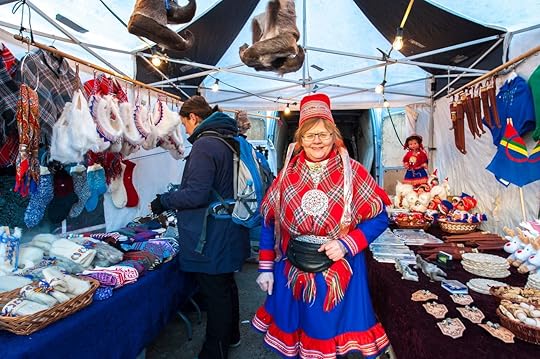
Photo: V. Belov/Shutterstock
“Vuonnamárkanat in Varangerbotn, Norway, is an excellent one-day market that gathers duojarat (Sámi artisans) and handicrafters. All the Sámi museums have gift shops with Sámi-made handicraft and design,” says Trollvik. She encourages travelers to avoid fake Sámi crafts that are mass-produced, and to do just that, she advises you “ask the shopkeepers where they get their Sámi handicraft and if they are made by Sámi people. Buying real Sámi handicraft supports our culture and keeps our rich handicraft traditions alive.”
8. Cross-country ski on ancient Sámi hunting grounds in the very north of Finland.

Photo: Holiday Village Valle/Lomakylä Valle/Facebook
Get your skis on and practice something the Sámi people have done for centuries: cross-country skiing through the vast landscapes of Sápmi. In winter, at Sámi-run Holiday Village Valle in Utsjoki, Finland, Sámi guides take you out on the snow in the very north of Finland. You might be fortunate to spot elk, hare, and wild grouse while breaking a good sweat.
9. Meet, talk, and listen to Sámi people.

Photo: Kartinkin77/Shutterstock
Visiting the museums and eating traditional foods are great ways to learn about a culture, but it can never replace talking and listening to the people native to that culture face to face. Trollvik says, “The Sámi are a varied people who have been living off different landscapes and resources. A lot of information is still carried on verbally in Sámi cultures across Sápmi, so talking and getting to know us is your greatest source of knowledge.” She continues, “Plus, Sámi people have a reputation for being great hosts, and we love our culture and are very proud to still carry on traditions and language. If you show interest, people will be happy to explain and teach you.”
Take the opportunity to talk to your hosts and guides at Sámi-run tourism operations (although bear in mind that all staff might not necessarily be Sámi). If you’ve chosen to stay at an Airbnb, ask your host about the local Sámi community as they might be able to put you in contact with someone. Especially hosts in villages like Naattavaara outside of Gällivare and Jokkmokk in Sweden, Sámi villages like Utsjoki in Finland, and the county of Finnmark in Norway — all have significant Sámi communities. Staff at Sámi museums can also be an excellent source of information; the staff at Ájtte museum in Jokkmokk is very well versed in Sámi culture and the surrounding Sámi community. Another opportunity to speak and get to know Sámi people is at festivals and gatherings like the Sámi Easter Festival in Kautokeino and Riddu Riđđu in Gáivuotna/Kåfjord, Norway. 

More like this: 11 facts of life in Arctic Europe
The post 9 experiences to immerse yourself in the Sámi way of life in Arctic Europe appeared first on Matador Network.

Best places to scuba dive this year
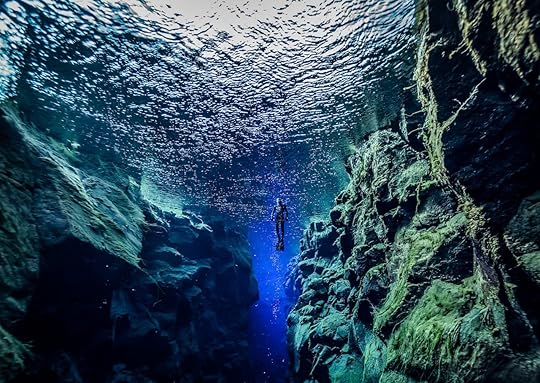
If you’re an avid scuba diver, you may be looking ahead to this new year and planning your next big adventure. But 2020 is a new decade, and you may feel like the significance of that fact calls for a different type of underwater experience. Maybe it’s diving that puts environmental concerns upfront. Perhaps you want to explore unexpected dive sites, or maybe you just want to put your skills to the test in really challenging types of dives. To help you decide, here are the best new trends and locations to dive, with options for every certification and skill level. So read on to see where your underwater adventures may take you.
Night lights: Bioluminesce from the deep

Photo: Subphoto/Shutterstock
Some of the most exciting new experiences in scuba diving take place by torchlight. Don’t worry — night diving is not as scary as it sounds. Also, there are plenty of options to choose from, whether you prefer something mild, wild, or in between.
You probably didn’t know that most underwater organisms emit colorful, glowing UV light. Humans can’t see this spectrum of color without help. But using a special dive light and colored filter for your mask allows you to watch the reef naturally illuminate. The ultraviolet colors you’ll see form an incredible rainbow of neon. And nearly all animals, even plants and corals, give off their own stunning shades. A standard light will disrupt the UV experience, so you won’t use one during your dive. But you’ll be so mesmerized by the stunning array of colors that you’ll barely notice the extra darkness.
If diving with UV light sounds exciting, blackwater takes it to the next level. Unlike a regular night dive, this experience takes place in deep water with no topography like reef and rock to explore. Instead, divers are suspended over hundreds of feet of water using a rope or a line. Then, under cover of darkness, millions of small organisms rise from the ocean’s deep in search of food and light. Divers use a combination of standard and UV lights to catch a glimpse of these fascinating creatures as they slowly migrate toward the surface. Because blackwater diving can feel disorienting, it’s an activity best left for experienced night divers.
Marine conservation: Reef restoration and research

Photo: fenkieandreas/Shutterstock
One of the most exciting parts of scuba diving is getting up-close and personal with the ocean’s most impressive animals. And a marine conservation project is the best way to get to know these fascinating creatures. Just a few years ago, baited shark dives and swimming with captive dolphins were all the rage. But it’s 2020, and now we know better.
Rather than treating aquatic animals like a tourist attraction, marine conservation projects allow you to get hands-on in ways that help the ocean. Popular options include coral reef restoration in Fiji and Belize, shark and manta research in the Maldives, and sea turtle studies in Indonesia. It may seem strange to pay for a volunteer opportunity, but this type of diving funds vital scientific operations and provides divers with a once-in-a-lifetime opportunity. Not only do you get to observe some of the planet’s most impressive species in their natural habitat, but you’re also doing your part to protect them for future generations.
The hottest trend in conservation diving is the chance to spend a week or more at sea, conducting research with working scientists. These liveaboard dive trips take place in some of the world’s most remote diving destinations like Mexico’s Revillagigedo Islands and Indonesia’s Komodo National Park. Liveaboard diving is a great way to maximize your tanks per day on a dive trip, and these voyages typically include seminars and classes after each dive day. Plus, one of the biggest perks of liveaboard diving is getting to spend time around other divers. Who knows, you might meet a new dive buddy or two.
Faraway places: Unlikely dive spots

Photo: Angelo Giampiccolo/Shutterstock
As diving becomes more and more popular, so do some of the sport’s most impressive sites. So you’ll have to go a little further off the beaten path if you don’t want to share. Of course, traditional diving areas are still fun, but they can eventually become “over-dived.” If you don’t mind a little extra time in transit, opt for a trip to one of the planet’s hottest new diving destinations, minus the tourist crowds.
When you think of Sudan, you might not automatically associate the destination with diving. But these waters have been home to recreational and research-based dive trips for decades. In fact, Jacque Cousteau’s underwater research center, the Conshelf, is now one of the region’s most exciting sites. And if you’re up for more adventure, there’s plenty nearby. Port of Sudan is home to some of the Red Sea’s best-preserved shipwrecks. Just offshore, the underwater landscape transforms into plummeting, near-vertical walls. These deepwater sites are perfect for spotting sharks, rays, and other large marine animals.
Once a nuclear test site for the US government, the Bikini Atoll was all but abandoned for decades. This chain of islands is one of the remote diving destinations on the planet, with only a handful of liveaboards visiting each year. And, thanks to spending all that time forgotten by the world, the atoll boasts some of the healthiest coral gardens you’ll ever see. While you’re absolutely guaranteed to be blown away by this region’s reef diving, the real attraction is its legendary “ghost fleet.” The hulking wrecks of submarines, aircraft carriers, and battleships lay at the bottom of the lagoon, waiting to be explored. These are some of the world’s best-preserved and least-dived wrecks, littered with WWII relics and artifacts.
Extreme environments: Cold and crystal clear
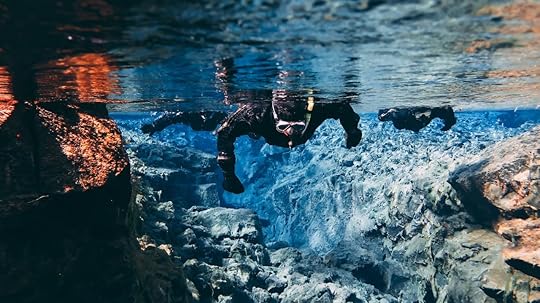
Photo: VicPhotoria/Shutterstock
When it comes to dive travel, most people automatically expect crystal-clear, tropical blue water. Warm-water environments aren’t the only thrilling marine ecosystems waiting to be explored, though. If you aren’t afraid of a little chill, 2020 might be your year to take the plunge in a slightly cooler climate. Coldwater dive sites can be surprisingly biodiverse and often boast nearly endless visibility. So while you might need an extra certification or two and some additional time in transit, these regions are well worth the effort.
If you have never heard of the Silfra gap, this dive site in Iceland is unlike any other. Silfra is a freshwater site, fed by glaciers. So, the water maintains a temperature below freezing but never solidifies. For this same reason, it’s some of the clearest water on the planet — with visibility over 300 feet. The gap itself is a crack or fissure between the North American and Eurasian tectonic plates. So, you can actually reach out and touch two different continents during your dive. One of the most memorable parts of this experience is being pushed along by the gentle current passing through the crack. All you have to do is float and watch both sides of the world go by.
There is also incredible diving to be done on the planet’s two polar extremes. These are some of the wildest places in the world, both above and below water. Antarctic diving is all about close encounters with stunning wildlife. Here, penguins and seals are the stars of the show, but fascinating underwater ice formations sweeten the deal. These nutrient-rich waters attract other wildlife like whales and walruses, typically seen from the surface. By contrast, Arctic diving focuses more on topography. Arctic divers can explore the undersides of glaciers and icebergs, or even try an immersion below sheets of ice. In between dives, be sure to keep your eyes on the horizon. You never know when a pod of orcas might pass through. 

More like this: Diving in Egypt’s Red Sea reveals a world of hidden wonders
The post Where to scuba dive in 2020: New trends and under-the-radar spots appeared first on Matador Network.

Original map of French food origins

Even the most amateur food connoisseurs don’t need Julia Child to tell them that France produces some of the best food in the world (yes, you heard me Italy!). Most people are content knowing the basics of where, exactly, all these delectable foods come from: Bubbly Champagne comes from Champagne, duh! But for anyone who is just a tad more curious and eager to explore the legendary culinary regions of France, there is a way. No, it’s not a gaudy new app or a guided tour. It’s a 200-year-old map commissioned by the illegitimate son of a king.
Entitled the Carte Gastronomique de la France, the map pinpoints the origins of the best food across France. The map, created by Jean-François Tourcaty in 1809, appears in the culinary tome Cours Gastronomique, written by Charles Louis Cadet de Gassicourt, an illegitimate son of Louis Louis XV. Cadet de Gassicourt was a prolific scientist and, according to the Cornell University library, where the map is part of the digital collection, he made it his life’s work to “mak[e] scientific knowledge an obligatory part of gastronomic expertise.”
Cadet de Gassicourt was a bit of a lush and a voracious eater himself. As a member of the Caveau Moderne, he gathered with a group of men to sing, eat, and drink wine. In fact, Cadet de Gassicourt wrote his very own song for the group, some of which went, “Laugh, eat, sleep and drink, rhyme and sing about nothing, love always, this is the glory of the true Epicurean … We need to have fun and happiness is in pleasure.” Sounds like a life motto I can get behind.
In order to pass along his wealth of knowledge about all the goodies being churned, vinted, fished, and farmed in his homeland, Cadet de Gassicourt penned Cours Gastronomique. As Atlas Obscura points out, some of the points on the map are a little outdated (you wouldn’t want to fish from the Seine in 2020, for instance, thanks to a lot of pollution) but for the most part, you can still see the astonishing breadth of France’s culinary output.
You’ll see some familiar names here in places where the food is named for the region where it was produced. In Brie and Gruyere, cheese rules, for instance. And in Bordeaux, the vineyards still flourish. However, if you’re planning to embark on a culinary tour of France, you should also know that if you want a good duck, you better head to Alencon and that Toulon and Cancale are for oyster lovers.
You probably won’t be able to use this map to guide you through France (best to use your GPS for that), but it does prove that France’s long-standing culinary traditions are so diverse and, in case you had any doubt, worth experiencing for anyone who wants to follow in Charles Louis Cadet de Gassicourt’s gastronomic footsteps. 

More like this: Where to eat in Paris without breaking the bank
The post This 200-year-old map shows the origins of your favorite French foods appeared first on Matador Network.

Dog saves sheep from Australian fire

Animals are really stepping it up during the Australian bushfires. First, it was wombats sheltering fellow animals in their burrows, and now it’s this border collie who helped save her owner’s farm livestock. Patsy, the six-year-old border collie and kelpie mix, guided a flock of sheep away from a fire danger zone.
View this post on InstagramA post shared by Patsy The Wonderdog (@patsythecorryongwonderdog) on Jan 5, 2020 at 2:48am PST
According to Cath Hill, sister of Patsy’s owner Stephen, in Bored Panda, “For Patsy, funnily enough the fires don’t really make much of a difference!!! She’s a border collie/kelpie cross, so she’s a working dog through and through. These dogs have been bred for generations to develop their ability to work with sheep and cattle on farms, and they are very intelligent and resilient animals. They love to work, it’s just what they are bred to do, and they can be very focused and single minded on the job! So when my brother needed Patsy to help bring the sheep into safety, that’s exactly what she did. She just got on with her job and did it, regardless of the conditions. Cool, calm, and collected.”
View this post on InstagramA post shared by Patsy The Wonderdog (@patsythecorryongwonderdog) on Jan 17, 2020 at 5:17am PST
Stephen used a tractor fitted with a water tank to keep the flames from his farm while Patsy herded 900 sheep and led them to safety away from the fire. Thanks to Patsy’s efforts, most animals on the farm were saved.
“I’d have been stuffed without Patsy,” said Stephen. “She’s earned front-seat privileges for the rest of her life.” 

More like this: How you can help the people and animals affected by the fires in Australia
The post Meet Patsy, the hero dog who saved 900 sheep during the Australian bushfires appeared first on Matador Network.

Cannabis at the US-Canada border

There’s a long list of items to verbally declare or decline that you’re carrying when driving through the Canadian border. When I entered Montreal on my first trip there from New York, a friendly Canadian border patrol agent greeted me with, “Bonjourhi,” the French-English mashup of hello in French-speaking Canada. Then came the list of prohibited items.
He started with alcohol and tobacco before moving on to guns, knives, bombs, torture devices, and weapons of any sort. Finally, he reached cannabis and other drugs. When we said no, he double checked and clarified that by cannabis he meant anything that could be referred to as weed, marijuana, edibles, gummies, creams, joints, THC drinks, patches, vaporizers, or cannabis gas masks (“They’re doing everything these days,” he said, chuckling). My fianceé and I chuckled back (Why would we bring cannabis into Canada where it’s legal?) and he let us on our way.
The return trip past the United States border patrol was much the same but less jolly and with more questioning about why our license plate read Indiana but we said our home is New York City (it was a rental).
These lines of questioning on both sides are no joke, and it’s only become more intense since Canadians got their first taste of legalized recreational cannabis in late 2018. If you arrive on either side of the border with cannabis in your car (let’s say accidentally for the purpose of this article), you can be subject to being searched, fined, detained, and kept from entering the country. This is as true when going to and from legal recreational cannabis states (Washington, Michigan, Vermont, and Maine) as it is for non-recreational states (Idaho, Montana, North Dakota, Minnesota, New York, and New Hampshire).
The intensity of questioning is all about your answers. Reports by the Canadian Broadcasting Corporation found that Canadians were banned from entering the US after admitting to consuming cannabis at some point in the past — regardless of how long ago it was. Border agents have a lot of power over who gets searched, who gets through, and who is turned around or detained. The Canadian government, according to the CBC, warned that “previous use of cannabis, or any substance prohibited by US federal laws, could mean that you are denied entry to the US.” (Similar to how Canada can restrict access for any American who has had a DUI in the past five years.)
In an October 2018 press conference, Christopher Perry, director of field operations in Michigan for Customs and Border Protection, said that evaluating whether or not a Canadian who has used cannabis in the past will be permitted to enter the US is “a case by case decision based on what is presented to the officer.” CBP can’t refuse to let a US citizen back into the country, but the officer can decide to take someone in for questioning or further inspection.
So what do you do if you reach the border and suddenly remember that pack of edibles in the glove department? Your best bet is to answer the border patrol agent truthfully. You’ll lose your goods and might have your car searched, but giving it up before crossing the international border will prevent further headaches the next time you cross by car. 

More like this: 7 countries you can’t enter if you have a DUI
The post What happens when you accidentally drive to the Canadian border with cannabis appeared first on Matador Network.

Snowshoe and cross-country in WA

When the snow falls, you can’t go wrong with a snowshoe or cross-country ski trail on one of the mighty mountains in Washington state. But you don’t have to scale the highest heights to enjoy some of the best Nordic trails the state has to offer. And it has plenty to offer — including the largest Nordic trail system in the country.
A few of these trails are best done with an overnight stay in Washington’s beautiful wilderness areas or one of its picturesque towns while others can be done as a day trip from Seattle. We’ve listed drive times from Seattle and lodging options for each one of these stunning snowshoe and cross-country ski trails.
1. Snowshoe on Hurricane Ridge — Olympic National Park

Photo: The Old Major/Shutterstock
Difficulty: Easy to challenging
Driving distance from Seattle: 2.5 hours, 83 miles
Just 17 miles south of Port Angeles, Washington, Hurricane Ridge is a popular destination in Olympic National Park year-round. Once the snow sets in, crowds thin out a bit, and the area opens up to all sorts of winter fun on the weekends, including cross-country and downhill skiing, snowboarding, tubing, and snowshoeing.
Beginning snowshoers can head west from the national park visitor center for a mile and a half to an open meadow at the end of the road. More advanced snowshoers can continue up Hurricane Hill. On a clear day at 5,764 feet, you’ll be able to see everything from Olympic Range to the Strait of Juan de Fuca and over Puget Sound to the Cascades. Just beware of the gusts that have earned the ridge its windy name.
Get your National Park Pass before heading out, or pay the entry fee. Hurricane Ridge Road will take you right into Port Angeles with numerous lodging options. For a truly sea-to-summit experience, check out the Red Lion Hotel in the Port Angeles Harbor.
2. Snowshoe in Paradise at Mazama Ridge — Mt. Rainier National Park

Photo: Marina Poushkina/Shutterstock
Difficulty: Moderate
Driving distance from Seattle: 2.5 hours, 107 miles
Cupping the east side of Mt. Rainier’s Paradise Area, Mazama Ridge offers breathtaking views of the national park’s Tatoosh mountain range, snow-covered meadows, and Mt. Rainier itself — without the arduous climb offered by the Skyline Ridge up above. To reach the ridge, take SR 706 from the Nisqually Entrance on the southwest side of the park to the Paradise Inn. Head north from the parking area toward Myrtle Falls on Skyline Trail, cross the Edith Creek footbridge, and follow the trail east to Mazama Ridge.
If avalanche warnings are high, then skip Myrtle Falls and take the 4th Crossing Trail, which follows Paradise River and joins back up with Skyline Trail away from the avalanche zones. Once you crest the ridge, the Skyline Trail will continue climbing to the north, an excellent adventure if you’re up for the challenge. Go south to follow Mazama Ridge through snowy meadows to views overlooking Reflection and Louise Lakes, along with numerous mountain peaks all around.
You’ll need a park pass here, too, or you can pay the entry fee. The National Park Inn is located along SR 706 inside the park boundary. If you’d prefer to stay outside the park, then consider taking the 706 west to Whittaker’s Bunk in Ashford, WA.
3. Wenatchee Crest Snowshoe Trail — Blewett Pass

Photo: Dan Lewis/Shutterstock
Difficulty: Easy
Driving distance from Seattle: Two hours, 109 miles
This ridge-top hike follows Forest Road 800 along the north side of Wenatchee Ridge in central Washington. With its minimal elevation gain and wide views of the surrounding mountains, the Wenatchee Crest Snowshoe Trail is a great option for beginning snowshoe hikers. To get here from Interstate 90, take Highway 97 north at Cle Elum or Ellensburg until you reach Blewett Pass.
The trail extends from the parking area on the north side of the highway, climbing through the forest to a junction about a half-mile up. Stay to the left to continue along the Wenatchee Ridge. From November to April, Sno-Park permits can be purchased on the Washington State Parks website. Your best bet for lodging will be in Cle Elum or Ellensburg south of Blewett Pass on Interstate 90, but if you’re headed north, then you might want to check out Wedge Mountain Inn on Highway 2 in Peshastin, WA.
4. Snowshoe to June Lake —

Photo: Kevin Wells Photography/Shutterstock
Difficulty: Easy
Driving distance from Seattle: 3.5 hours, 184 miles
In the southern foothills of Mount St. Helens, an active volcano which famously erupted in 1980 and most recently in 2008, June Lake is a popular destination for snowshoers and cross-country skiers. To reach June Lake, take SR 503 east out of Cougar, Washington, for about seven miles, then turn north onto Forest Road 83 and follow it until you reach the Marble Mountain Sno-Park parking lot.
At the parking lot, put on your snowshoes and take Pine Marten Trail #245E northwest into the woods. You’ll rejoin the road to cross Lake Creek, then cut back into the trees as you turn off Pine Marten Trail onto the June Lake Trailhead Road. From there, follow the creek north for a little over a mile until you reach June Lake. Once there, you’ll want to take pictures of the icy waterfall on the far side of the lake. This is a good place to have a snack and admire the view.
The Sno-Park permit is also required here. And if you want to explore more of the Marble Mountain Sno-Park in southwestern Washington, consider booking a room at the Lone Fir Resort nearby in Cougar, Washington.
5. Cross-country ski the 20-mile Methow Community Trail

Photo: Nate Hovee/Shutterstock
Difficulty: Easy to challenging
Driving distance from Seattle: Four hours, 240 miles
Methow Trails is the result of efforts by private landowners and numerous agencies to create the largest Nordic trail system in North America. Those efforts succeeded in creating a network of over 120 miles of cross-country skiing, snowshoeing, and fat biking trails, supported by the non-profit Methow Trails organization.
Stretching from Winthrop to Mazama through the Methow Valley in north-central Washington, the 20-mile Methow Community Trail is the central feature of that network. The different sections of the Methow Community Trail range in difficulty from beginner to advanced. The proximity to picturesque towns like outdoorsy Mazama; Winthrop, which looks like the Old West, and even charming Twisp to the south, makes Methow Trails a fantastic winter getaway option.
Kids under 17 ski free, equipment rentals are available, and daily snowshoeing passes are only $5 per person. The Methow Community Winthrop Trailhead starts at the Methow River Lodge and Cabins, which is also a comfortable place to stay.
6. Snowshoe to the Snow Peak Cabin — Colville National Forest

Photo: Robert Mutch/Shutterstock
Difficulty: Moderate to challenging
Driving distance from Seattle: 5.5 hours, 315 miles
The Kettle Crest Trailhead is at the top of Sherman Pass on Highway 20 in northeastern Washington. Parking is on the north side of the highway, so you’ll have to cross the highway to access Kettle Crest South Trail #13. The trail climbs through old-growth forests and takes you around Sherman Peak, which impresses with its over 10,000-foot glacier-capped height, traces the west side of Snow Peak, and reaches the Snow Peak Cabin about five miles in.
Sitting on a ridge between Snow Peak and Bald Peak, Snow Peak Cabin lies 6,400 feet and offers sweeping views of the Kettle River Mountains to the south and west. You and up to three friends can rent this rustic cabin for $30 a night, giving you plenty of time to explore the surrounding peaks and soak in the views. (Reservations must be made at least two days in advance and cannot exceed five consecutive days.)
The Sno-Park permit is also required here. It’s critical to check avalanche conditions before making this hike. Also, treat the cabin with respect and take it easy on the wood. If running water is more your style, you may want to check out the Northern Inn in Republic, Washington, about 17 miles west of Sherman Pass. 

More like this: The 9 best places to go snowshoeing in North America
The post 6 stunning places to snowshoe and cross-country ski in Washington appeared first on Matador Network.

Matador Network's Blog
- Matador Network's profile
- 6 followers



